What it means to be a Badger.
Alumni Park’s lantern is a seven-foot high steel cone lit from within to illuminate the laser-jet cut imagery chronicling ten decades of university culture, and inspirational words from alumni commencement speakers. The student experience at the UW has changed over it’s 150-plus years, but certain aspects of the Badger spirit have been present the whole time.
1890
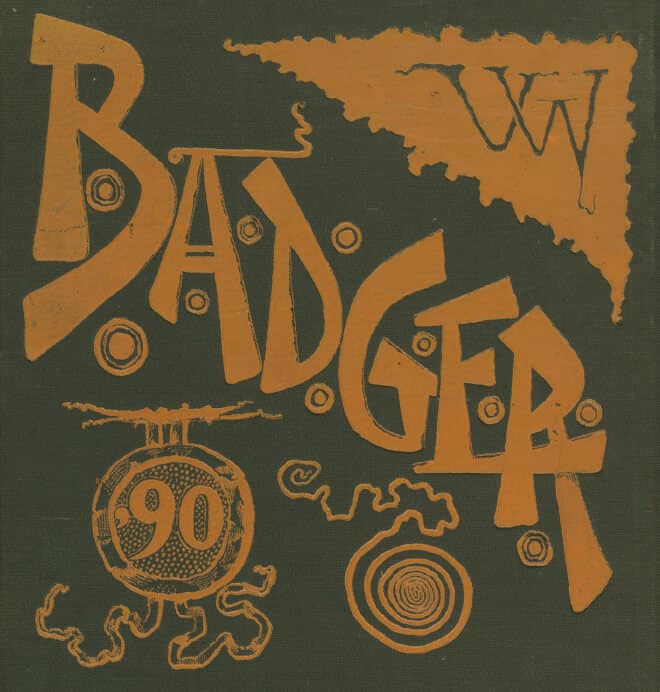
Badger Yearbook: UW Student Snapshot
For more than 100 years, the Badger yearbook has preserved UW history in its annual snapshot of campus.
Its staff is responsible for documenting student spirit and major events — wartime support and protest, campus visits from presidential candidates and celebrities, and Camp Randall’s biggest legends. The hardbound books are both a personal keepsake and an archive for future generations.
Through the Badger, we can trace the evolution of fashion and hairstyles; music and pop culture (writers often chose song lyrics to express the campus mood); and athletics during good times (nine Rose Bowl appearances) and bad (the pre-Alvarez lean years).
The first yearbook published by the UW — in April 1884 — was called Trochos (the Greek word for “wheel”). Its second edition came out in 1887, and in February 1888, the annual was renamed Badger.
1902
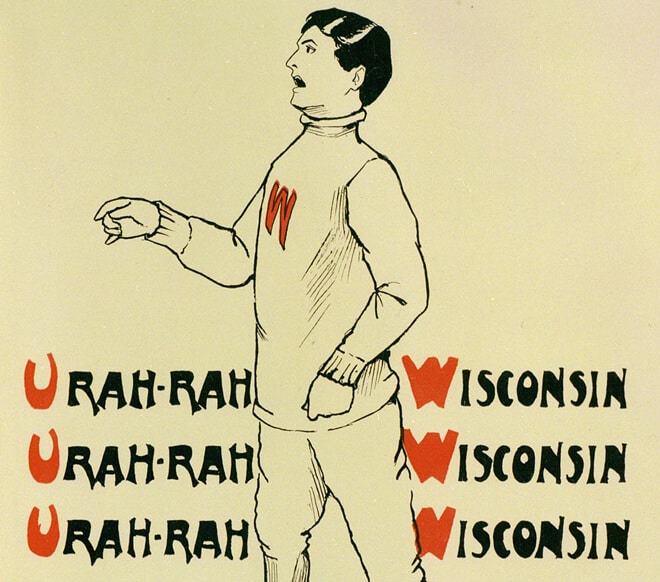
U-Rah-Rah: Our College Yell
They’re words every Badger knows by heart: “U-Rah-Rah!” But where did the spirited syllables of “Varsity” come from?
One rumor suggests that it’s a mondegreen of the phrase “You Are Our Wisconsin.” (Go ahead and sound it out; it’s not too far-fetched.) It’s also been said “U-Rah” derives from the U.S. Marines’ battle cry “Ooh Rah,” though that wasn’t used until decades later.
A more likely theory is that our “U-Rah-Rah” is a variation of cheers heard on dozens of campuses at the time, the most famous being Princeton’s “locomotive.”
But could it also be that we stole the cheer from the University of Minnesota when they were lamenting their own lack of school spirit after a football loss to us?
If you’re going to fail, fail big! If you don’t, you’re never going to make a difference.
Jerry Zucker
Hollywood Writer, Director & Producer
BS 1972
1909
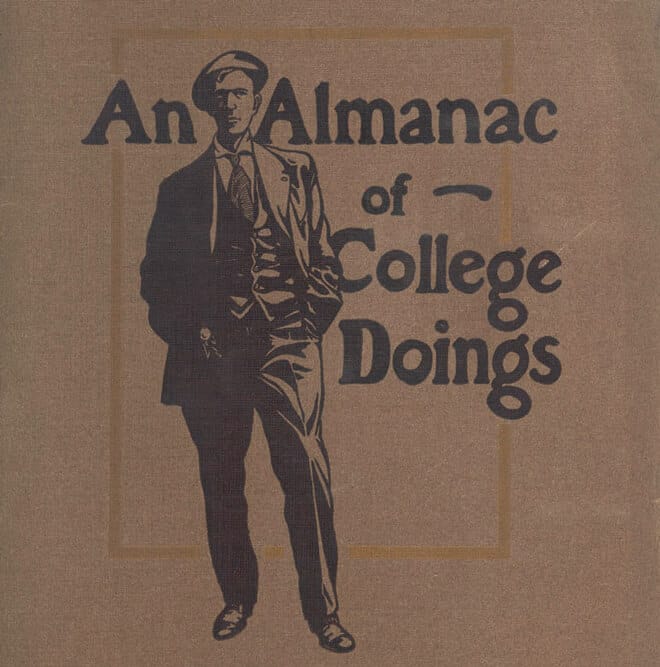
Almanac of College Doings: College Life, Month by Month
Truths about monthly life at college were delivered in verse, snappy prose and skillful illustrations for the 3,600 students enrolled at the UW in 1909.

That was the year that a 48-page pamphlet called An Almanac of College Doings circulated on campus, giving students a light-hearted look what was in store for them during every month on the calendar.
In May, for example, the almanac’s “little astrologer” warns against impetuousness. “Now is the season to think before thou does aught — yea think even three times — for this is the Spring Fever month and many a made idea will come into thy bone head to make trouble if thou squelch it not.”
The almanac, which appeared just once, names Horatio Winslow BA1904; Max Otto BA1906, MA1908, PhD1911; and Vivian Thayer BA1910, MA1917, PhD1922 as writer, illustrator, and publisher, respectively.
1910
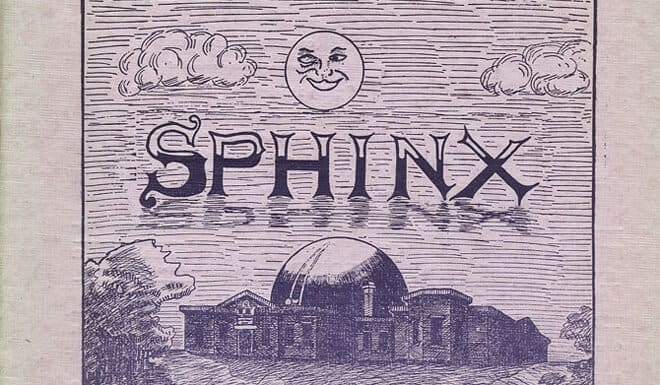
The Sphinx: UW Humor Magazine
Nearly a century before The Onion started making its readers laugh in 1988, a different group of enterprising students at the University of Wisconsin showed a deft hand at creating a humor publication.
The Sphinx launched in 1889, and every two weeks during the academic year, the campus could read the latest silliness from the magazine’s staff. At one point, some 200 college humor publications were rolling off printing presses around the country, and they often cribbed content from each other. Many of these efforts are now part of Special Collections in the UW’s Memorial Library, thanks to a donation in 2008.
But the Sphinx had some jokes that only Badgers could love. In 1903, while saluting a student headed overseas as a Rhodes scholar, the staff noted, “It is undoubtedly a matter of congratulation for us that we may send a man to Oxford, but it is also a matter of congratulation for Oxford that they can get a man from Wisconsin.” The board of regents apparently loved the magazine’s humor, too, allocating a whopping $75 to support it in 1908.
The question of where you are supposed to be going should occupy you all of your life.
Shirley Abrahamson
Wisconsin Supreme Court Justice
DJS 1962
1920

Orchesis: Pioneering Dance Group
These days, legacies are measured by online searches.
The results that pop up on the computer screen for Orchesis, a dance group formed at the University of Wisconsin in 1918, reveal a lasting legacy indeed. The hundreds of present-day photographs of Orchesis groups and details about their upcoming performances across the country serve as ongoing tributes to innovative dance professor Margaret H’Doubler BS1910, MA1924 and her trailblazing students.
During the discipline’s formative years, the classes weren’t enough for college women who welcomed the chance to move their bodies freely and break from the constraints of early 20th-century society. They asked H’Doubler if they could pursue dance outside of class. She agreed and created a student group she named Orchesis.
“In my readings, I ran across that word, and I believe that the Greek translation means ‘the science of human motion,’ ” H’Doubler recalled during an oral history interview conducted in 1972. “I thought, ‘Wouldn’t that be a lovely name for a dance group?’ ”
1930

Wisconsin vs Chicago: Early Badger Football
Bright colors and an energetic cheerleader graced the cover of the official program on October 11, 1930, when the Wisconsin Badgers faced the University of Chicago for a Big Ten football game.
Chicago and the Big Ten belonged in the same sentence back then. Representatives from Purdue and the Universities of Chicago, Illinois, Michigan, Minnesota, Northwestern, and Wisconsin had originally gathered at Chicago’s Palmer House in 1895 to formulate policies to regulate intercollegiate athletics. They established what evolved into the Big Ten Conference.
But on that particular day at Camp Randall Stadium, fans handed over a quarter for a copy of the official program and watched the Badgers prevail over Chicago, 34–0. Wisconsin closed out the season with a 6–2–1 record, placing it fourth in the conference behind Michigan, Northwestern, and Purdue.
1934

WHA: Trailblazing Radio Station
The world comes to us as we listen to the latest news or music in our homes, while driving, or on our mobile devices. Radio, that marvelous medium, came into our lives in part through the efforts of tireless pioneers at the University of Wisconsin.
Electrical engineering professor Edward Bennett began experimenting with so-called wireless telegraphy and secured a broadcasting license (under the call sign 9XM) in 1914; physics professor Earle Terry and his students began building additional equipment in 1915. Working in the basement of Science Hall, they faced serious obstacles to progress — not the least of which was World War I.
But Terry saw the new technology’s potential to fulfill the Wisconsin Idea by broadcasting educational content. Spoken-word weather forecasts were first aired by 1921, and in 1922, a broadcast license was granted to the university with the randomly assigned call letters of WHA.
To maintain your mastery, you must continuously refresh your knowledge … Stay foolish.
John BBA 1955 & Tashia BSE 1955 Morgridge
Philanthropists
1938

The Octopus: A Punny Origin Story
In November 1919, an odd new publication began to circulate around campus. Called the Octopus, the 30-page rag cost 20 cents and was printed on seafoam-green paper. It included lengthy articles, including “A Dissertation on Chop Suey” and “From the Lit Wastebasket,” a catalogue of dreadful, pun-laden poems.
No one who saw the first issue likely would have predicted that the “Octy” would go on to become the UW’s longest-running campus humor magazine — and an incubator for some of the university’s most successful artists until it folded for good in 1959.
We don’t know what originally inspired Lowell Ragatz BA1920, MA1921, PhD1925; Marie Bodden BA1921; Frederick L. Sperry (attended 1919 to 1922); and the other founding staff members to launch the Octopus. But we do know that editor-in-chief Ragatz was already an aficionado of “fakes, forgeries, and the bogus” when he arrived at the UW after serving in World War I. Ragatz was a lifelong philatelist, or collector of stamps and other postal memorabilia, and he developed an expertise in identifying stamp forgeries.
1948
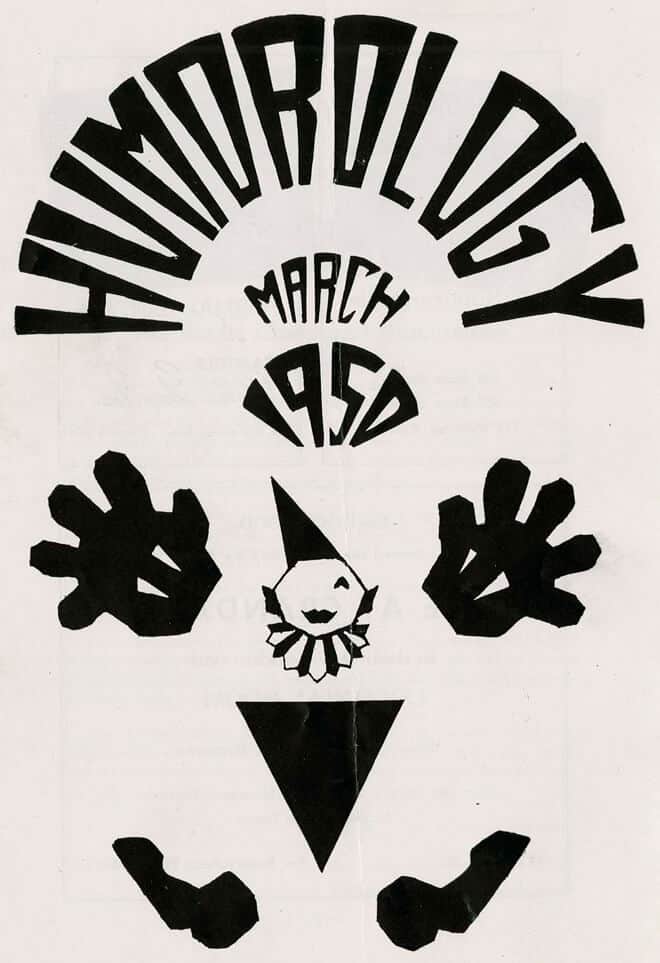
Humorlogy: Art with a Heart
Badgers bursting into song and dance while flying over one another isn’t something you’d expect to remain under the campus radar. But UW’s Humorology is full of surprises — though at long last, the secret may be out about this student variety show.
“Humorology is one of the longest traditions in UW history,” says Claudia Shapiro BA2016, who served as its student executive director her senior year. “It’s an annual, juried, musical-variety show where more than 600 students come together and spend the course of the academic year writing, producing, directing, and choreographing 20-minute mini-musicals [to benefit] charity.”
Though the Centennial Badger mentions a Humo show in 1947, the group dates itself as having formed in 1948. Little is known about its earliest days, but proceeds from the eight Humo skits performed in 1949 benefited Kiddy Kamp, which served children who suffered from rheumatic fever.
Consider what people think of you, but don’t be afraid of what people think of you.
Anders Holm
Comedy Actor, Writer, and Producer
BA 2003
1952
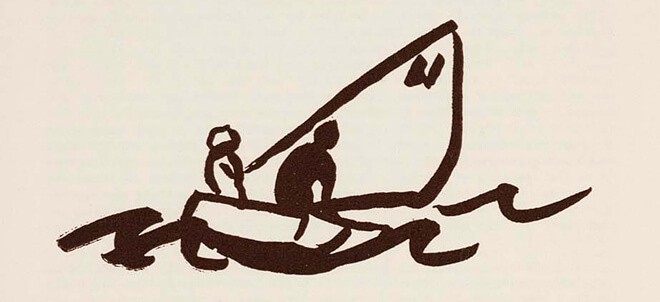
Wiscetiquette: A Newbie’s Guide to Badger Social Life
Students didn’t always arrive on campus clad in T-shirts and jeans, experienced in dating, and armed with smartphones and Snapchat. In a simpler, less politically correct time starched with social conventions, freshmen needed tips on how to navigate the sophisticated college world.
For decades, campus newbies took their cue on dress, social graces, and classroom behavior from Wiscetiquette, a Miss Manners for the Badger set.
For instance, the 1936 edition tells men “there is nothing that detracts from your appearance more than a sweat shirt.” And the 1947 issue pleads with men to “puleeze keep a clean shave — the cave man look is definitely taboo.”
1955
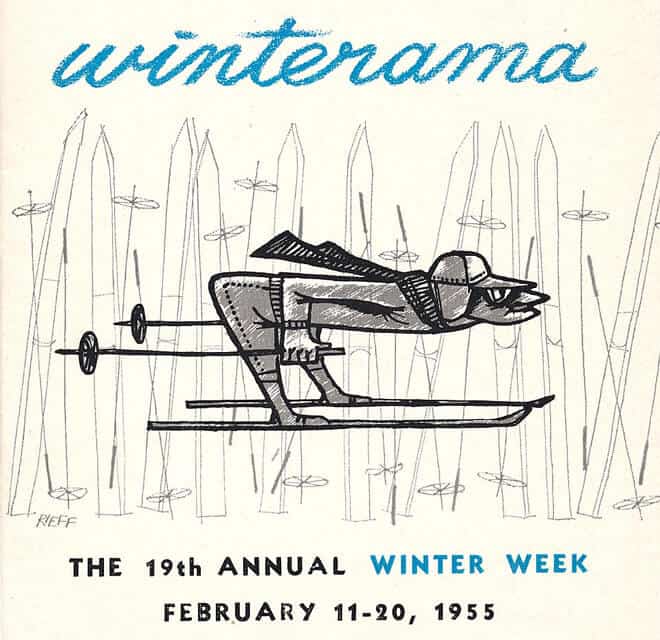
Winterama: Wisconsin’s Winter Carnival
Winter at the University of Wisconsin is different for every Badger. On campus, it can mean hooking up with Hoofers for a ski or snowboarding trip, or slowly shuffling along the icy sidewalks of Bascom Hill. In-state students are used to the dramatic changing of the seasons; others are shocked (and maybe even delighted) by the deep freeze and even deeper snowdrifts.
In the early 20th century, students came up with a way to celebrate the season that can seem to stretch for multiple semesters.
The first official Winter Carnival – or Ice Carnival as it was called for the first several years – boasted skating races, snowball fights, ice hockey bouts, and even ice boating.
1955

Dormsylvania: Dukes of the Dorms
Badgers take silly seriously. Where else would you celebrate spring with a week of crazy campaigns — from mock kidnappings and bed races to ventriloquism — and say it’s in honor of British royalty?
In 1936, Britain’s King Edward VIII shocked the world when he abdicated his throne to marry true love and divorced American commoner Wallis Simpson. Members of the University of Wisconsin Men’s Halls Association (MHA) were reportedly so moved that they created a new realm across the pond over which the couple could rule: Dormsylvania.
Not all of you should necessarily follow your dreams. For example, if your dreams are ridiculous. That’s what hobbies are for … When you get to the fork in the road, always go left. Don’t ask why.
Ben Karlin
Comedy Writer and Producer
BA 1993
1959
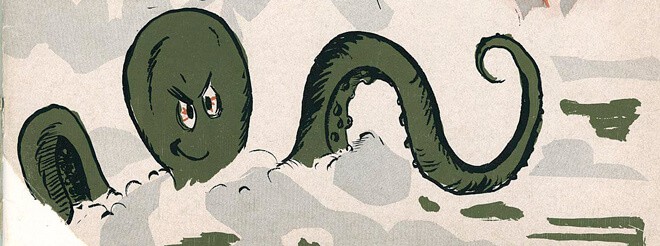
James Watrous: Serious Satire
The Octy’s most famous contributor was James Watrous BA1931, MA1933, PhD1939, who went on to become a professor at the UW — and Wisconsin’s most notable muralist and mosaic artist.
Watrous got his start as a sophomore cartoonist for the Octopus, and he wasted no time in becoming one of the magazine’s edgiest contributors. One of his early pieces depicted inebriated students at a Prohibition-era prom — a deliberate nose tweak aimed at the Women’s Christian Temperance Union, which had called for censorship of the university’s publications. Watrous eventually became the editor of the Octopus, and under his leadership, the magazine evolved to make more substantial social commentaries. Among other topics, his drawings from this time advocated for instructor pay increases and cautioned against a budding nationalist movement in Wisconsin.
“You never felt that this was an ivory tower academic,” journalist Whitney Gould BA1965 once wrote about Watrous. “Rather, he was someone who understood the inseparable and enriching connection between art and life, between the artist’s eye and the social fabric in which he or she worked.”
1960’s

Hoofers: Exploring Wisconsin’s Outdoors
Wisconsin Hoofers is UW–Madison’s oldest and largest student-led organization. More than 2,500 Badgers — students, faculty, staff, and community members — belong to Hoofers’ six clubs, and for nearly a century, recreational adventurers just like them have been climbing mountain peaks and exploring shipwrecks in Wisconsin and across America together.
In 1931, professor Harold “Doc” Bradley and Memorial Union director Porter Butts BA 1924, MA1936 set out to establish a club to provide equipment and instruction to students who wanted to enjoy Wisconsin’s beautiful outdoors.
It started with just three pairs of skis and 10 toboggans for rent — today Hoofers has six official clubs, some nearly as old as the organization itself.
Life might have other plans … That might not be a bad thing.
Jake Wood
Veteran, Team Rubicon co-founder
BBA 2005
1960’s
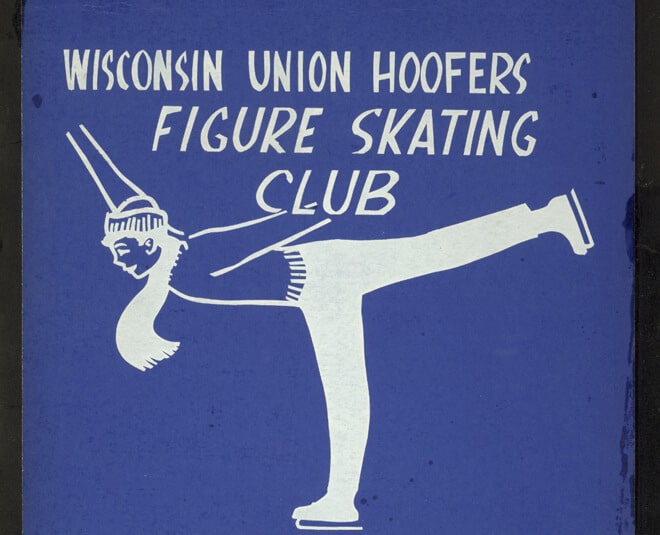
Hoofers Figure Skating: The UW’s Skating Tradition
The UW campus has always been eager to embrace winter, regarding cold temperatures, ice, and snow as an open invitation to socialize and have fun. What better way to do so than to pull on a pair of ice skates?
Although Lake Mendota seemed like a natural venue for skating, snow and rough ice make it less than ideal. In the 1920s, the university created rinks across from Memorial Union — on what is now Library Mall — for hockey and recreational skating.
The UW student board sponsored winter-centric activities in the early 20th century during the campus Ice Carnival. Wisconsin Hoofers took over management in 1940, calling the annual event the Winter Carnival. Activities ranged from broom hockey to carving ice sculptures to speed skating, and organizers flooded the Memorial Union Terrace to provide plenty of icy surfaces.
1967

In Residence: The 1967 UW Music Festival
Over six mostly-sunny summer days in June 1967, the University of Wisconsin campus welcomed the Chicago Symphony Orchestra — and hundreds of students, faculty and staff, and community members — for an innovative music experience like Madison had never seen.
During the day, members of the orchestra held master classes and lecture demonstrations for students attending the summer session. At night, the community reveled in open rehearsals and concerts. Tickets cost a modest $2, with a discount offered to children and high school students.
Top top it all off: jazz legend Ella Fitzgerald was the headliner of the grand finale.
All I ask is that you’re engaged with the world around you. Find your cause. Find your passion. Find your purpose and carry on.
Neil Willenson
Founder of Camp Heartland
BS 1992
1968
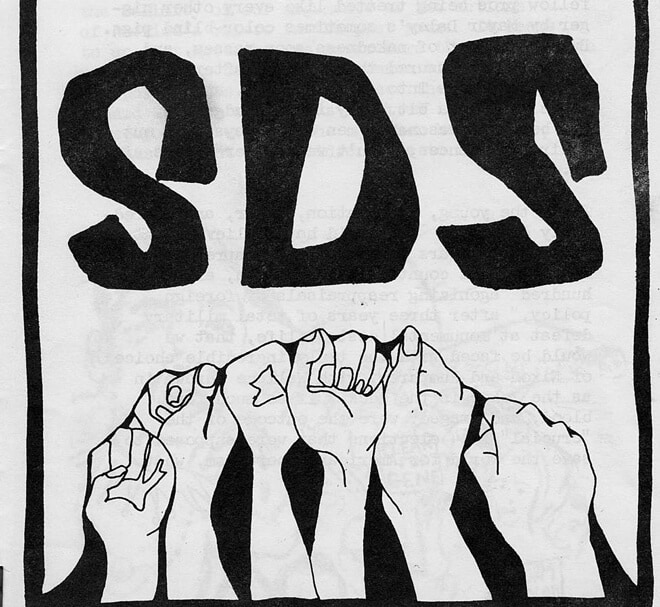
Students for a Democratic Society: Campus Activism
The nation experienced a great divide in the 1960s and early 1970s, and college campuses were often at the epicenter of discontent. When the United States became involved in the war in Vietnam in 1965, a perfect storm began brewing — and a generation of young people started to influence politics and society as never before.
At the UW, exploration of the Vietnam conflict began calmly with a teach-in in April 1965. But as the war escalated, so did activities on campus, with Students for a Democratic Society (SDS) — one of the most visible activist organizations — leading a protest against Dow Chemical’s campus recruitment efforts in February 1967. That October, a more intense protest against Dow, which had a contract with the U.S. government to manufacture napalm, ended with injuries to both protestors and police, and demonstrators called for a student strike.
1969
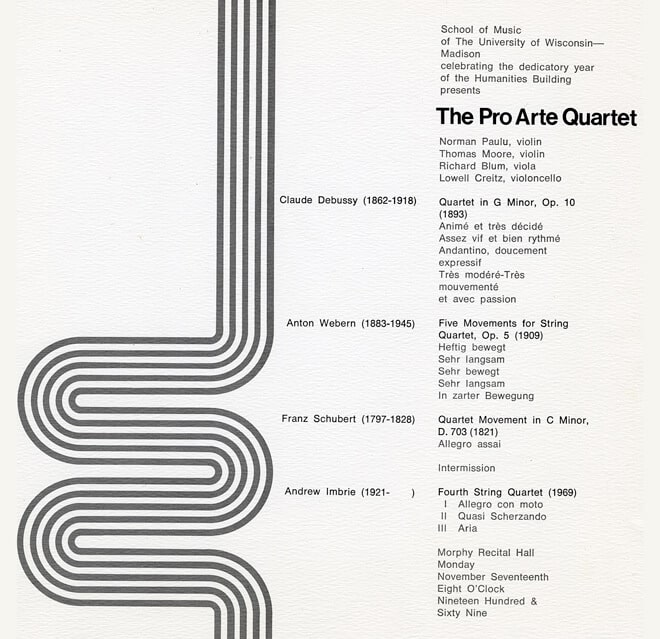
Pro Arte: Quartet in Residence
The classical music Quatuor Pro Arte was once the court quartet to the Queen of Belgium.
The quartet first performed in Madison in April 1939, and it returned in May 1940 to perform Beethoven quartets as part of a festival at the new Wisconsin Union Theater. Mid-concert on the evening of May 10, it was announced from the stage that the Nazis had invaded Belgium.
Upon hearing the news, and already greatly impressed with the ensemble, School of Music School chair Carl Bricken and UW president Clarence Dykstra accelerated a plan to invite Pro Arte to become UW artists-in-residence. The quartet accepted a one-year invitation, establishing one of the first such residency programs at an American university.
Since then the agreement has been extended from months to decades. The art on the lantern is from a 1969 performance program.
1974

Movietime: For Moviegoers and Film Buffs Alike
During the “golden age” of film appreciation at the University of Wisconsin, students lined up for Movietime.
This wildly popular series of the 1960s and 70s screened hundreds of films: Westerns, social-protest films, psychological dramas, musicals, epics, documentaries, rock films, comedies, tragedies, and classics.
Movietime evolved out of a longstanding interest in film at the UW; students founded the Wisconsin Film Society in 1948. Movietime claimed the intimate Fredric March Play Circle at Memorial Union as its regular venue, and organizers were proud to have featured almost every major director from the sound era — from Chaplin, to Fellini, to Hitchcock.
By 1973, fall semester attendance rocketed up to 31,000 admissions.
Pursue your passions with relentless energy.
Kay Koplovitz
Satellite Cable Television Entrepreneur
BS 1967
1974

The Wheat and the Chaff: A UW Handbook for the Ages
Every generation of Badgers has its campus compass.
In the university’s quasquicentennial year of 1974–75, the UW debuted a campus beacon in the form of a handbook, The Wheat and the Chaff: A Guide to Sifting and Winnowing through the Campus.
The first edition was a must-have for new arrivals, and the editors were clear about the book’s mission: “The University of Wisconsin–Madison and city of Madison are full of opportunity for those who know about them.”
In a surprisingly efficient 127 pages (featuring original cartoon illustrations by Glenn Spevacek BS 1971 of the Office of News and Publications), the book’s basics included chapters about academics, counseling, employment, finances, foreign students, government, health, housing, minorities, protection, social life, and transportation.
2011

The Daily Cardinal: Sifting and Winnowing Since 1892
Horseback: it really was the best way to deliver the first edition of the Daily Cardinal.
Founded April 4, 1892, the Daily Cardinal is the nation’s sixth-oldest independent daily student newspaper. Named by founder William Wesley Young for the university’s official colors, and predating the School of Journalism and Mass Communication, the Cardinal was the UW’s first training ground for student journalists.
Celebrating its 125th anniversary in 2017, the Cardinal counts more than 8,000 living alumni, including many notable figures in American journalism.
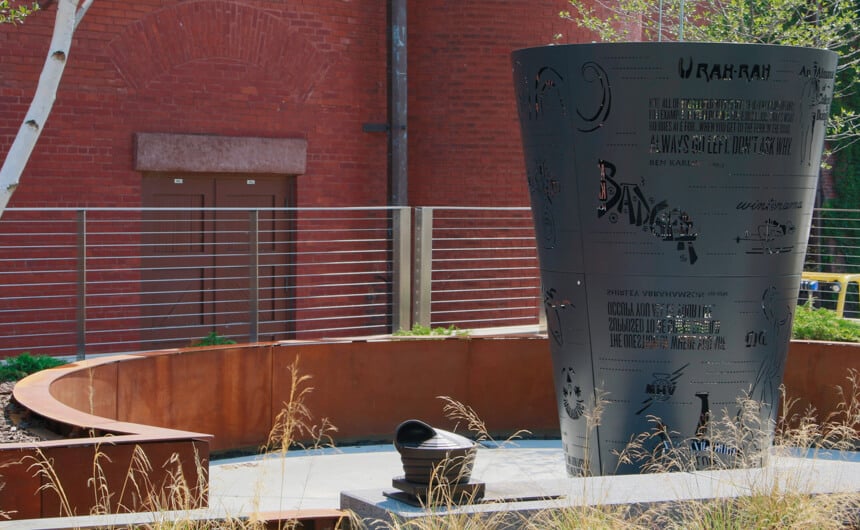
 16° F
16° F